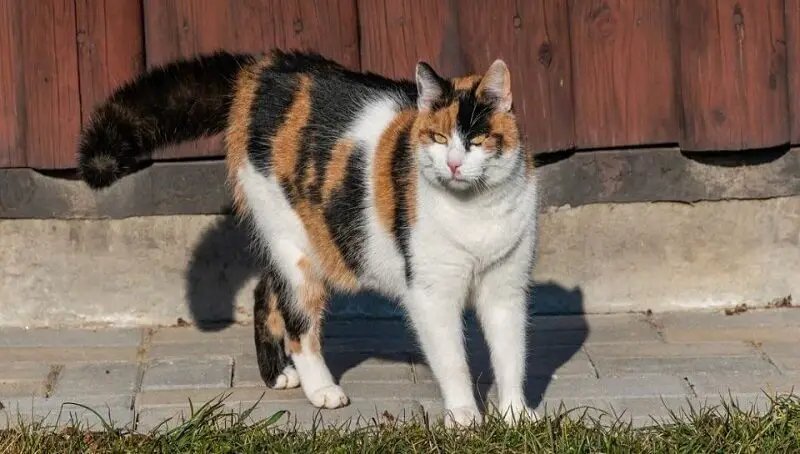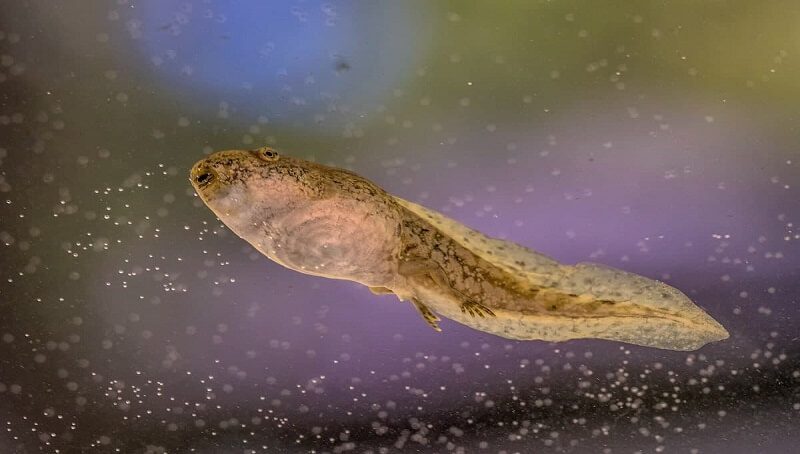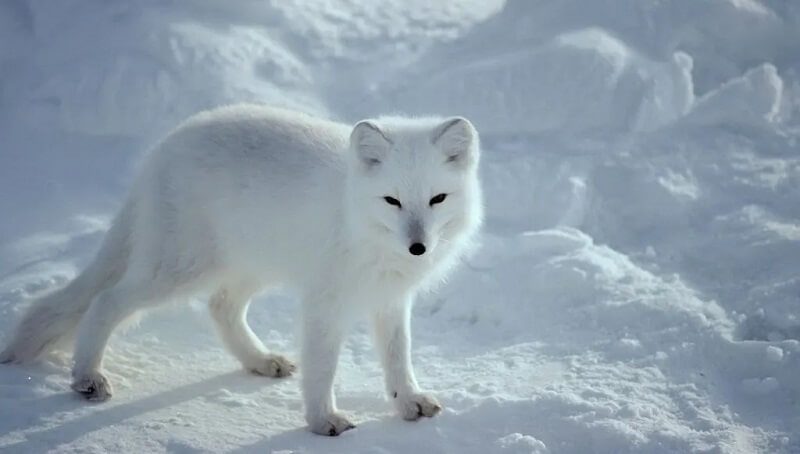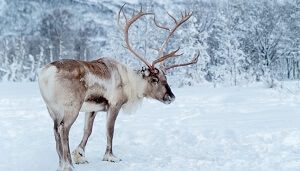
Common Calico Cat Health Problems To Prepare For
July 20, 2022
What to Feed Tadpoles in Your Aquarium
July 21, 2022
Nature has always taken care of the animals that needed to warm up, but sometimes, the weather alone is not enough, not even during the short summers. Winter animals have developed special features that allow them to live in places with low temperatures.
Features developed by animals to withstand low temperatures include abundant fur, special circulatory systems, short limbs, and fat accumulation, among others. Most representatives of the cold area fauna have a thick layer of subcutaneous fat. For big animals, their impressive mass produces a large amount of heat, while some animals have small ears and legs, which help them not to lose heat.
In addition to animals, plants and microorganisms have also adapted to the cold climate. These adaptations are necessary for the establishment of biotic relationships that have allowed the survival of animals living in these climates.
Animals commonly found in cold climates include bears, aquatic mammals, and various types of birds. The most surprising thing is that many representatives of the animal world from harsh climate conditions interact with each other.
So what are the most popular animals to live in cold climates?
Polar bears
The largest representative of the bear family, listed in the World Red Book since 1953, is found nowhere but in the Arctic. Due to its thick fur, the polar bear, unaffected by the local cold, can move comfortably on land, in water, and on ice. These enormous animals, unfortunately, are facing extinction due to global warming. Worldwide, the number has fallen by 40% in 14 years and is estimated at about 20 thousand.
You might also like my articles on polar bear names, penguin names, and the height of a polar bear standing up.
Some male polar bears reach three meters high and tons in weight. But with such impressive size and apparent laziness, polar bears are extremely agile and resistant animals.
Polar bears are excellent swimmers, exceeding up to 80 km in frozen waters with the help of a membrane on their paws. Polar bears can easily walk about 40 miles a day, coping with heavy ice and deep snow. The Polar bear’s fur retains heat so well that even infrared aerial photography does not detect it.
Polar wolves
The polar wolf is a ferocious predator and an extremely voracious animal. Due to the ability of this animal to attack animals and even humans, it is also called the Demon of the North. The weight of a wolf varies from 9 to 30 kg.
This subspecies of the wolf lives throughout the tundra and the Arctic. Usually, it feeds on small animals – polar rabbits and lemmings, but musk and reindeer are also part of its diet. In the harsh conditions of polar nights and long periods of cold, it adapted to feed on any food.
Polar wolves can only survive in packs. In the conditions of the Arctic deserts, where there is no room for an ambush, they must resort to another – social hunting tactics. Often, they patiently wait for the victims to err and weaken their defenses.
The wolf is omnivorous and can eat both the leftovers of food from other predators, or hunt alone, even large animals. It can also eat plants, berries, and nuts. This is an animal so brave and mischievous that even the polar bear tries to avoid it when they meet.
Arctic foxes
The Arctic or Polar fox is a predatory animal, the only representative of the Arctic fox genus. Unlike the usual fox, it has a short muzzle, small rounded ears, paws covered with stiff hair, and a squat body.
This perfect creature has a large amount of pigment in its eyes to protect them against sunlight reflected by snow and ice. Although they come from the same family as wolves, they tend to be solitary.
At no more than half a kilometer from water, the Arctic fox digs complex burrows with numerous entrances. During the winter period, they often have to deal with a burrow in the snow. It eats everything; its diet includes both plants and animals. But, the basis of its diet consists of birds and lemmings.
Polar rabbits
The Arctic rabbit survives winter conditions with its thick fur and heats up staying in open pits from snow or soil. Unlike other rabbits, the polar rabbit has shorter ears. The polar rabbit can run at 60 miles per hour. The species that hunt the polar rabbit are the Arctic fox, the falcon, and the snow owl.
Snow monkeys
They are also known as the Japanese macaque for living in the cold areas of this country. They have abundant fur that allows them to withstand temperatures of several degrees below zero.
Reindeer
 It is one of the most famous large animals in the Arctic circle. Gathered under a single species (Rangifer tarandus), these mammals now live in the northern part of North America, extending from Spitzbergen (Svalbard) to East Siberia, one of the closest island groups to Scandinavia and the North Pole.
It is one of the most famous large animals in the Arctic circle. Gathered under a single species (Rangifer tarandus), these mammals now live in the northern part of North America, extending from Spitzbergen (Svalbard) to East Siberia, one of the closest island groups to Scandinavia and the North Pole.
The more difficult the conditions of their existence are, the faster will animals evolve. The Caribou, as they are called in North America, are not only survival champions, but also the youngest members of the family. They appeared only two million years ago.
Flat and wide, sharp at the edges of the hooves, reindeer turn to be animals humans use to move on the field. They easily travel through snow, swamp, and ice. The same hooves help the caribou swim perfectly and cross not only major rivers like the Yenisei but also large straits. Their coat has a special structure, as the hairs extend toward the end and create a layer of thermo-insulating air. Even the upper lip and lobe of their nose are covered with soft and delicate hair.
Reindeer eat a variety of foods. During summer they enjoy succulent plants, in winter they eat lichens and shrubs. To compensate for the lack of trace elements, they usually eat their own discarded horns, algae, and shells thrown ashore. An important reason for their survival is their way of living in herds.
Arctic Musk oxes
The Arctic musk ox has the same age as the mammoth. It is a rare animal with strong hooves and a thick undercoat that is several times warmer than that of a sheep. Their long, thick hair hangs from above almost to the ground and covers the animal, leaving out only the hooves, horns, nose, and lips. The musk ox survives the cold of winter without migrating and easily resists very cold weather, but it can easily die in the presence of large snow, especially with an ice crust on top.
Lemmings
The lemmings are small mammals that live in the tundra. They are mainly herbivores and, in turn, are hunted by cold-weather birds, such as the snowy owl or the rough-legged falcon.
Their population varies cyclically every year, probably due to fluctuations in predatory relationships.
Walruses
The only modern representative of the Walrus family is easily distinguished due to its massive fangs. In terms of size among the pinnipeds, it is second only to the elephant seal, but the intervals of these animals do not intersect. Walruses live in herds and bravely protect each other from enemies.
Penguins
Eight of the world’s 17 penguin species can be found in Antarctica and the Subantarctic area. About 12 million penguins live on the Antarctic Peninsula. You will never forget the experience if you manage to go ashore to visit a penguin colony. Yes, they are very noisy and no one will ever describe their smell as delightful, but that is less important.
Penguins get their food from the sea. They can’t fly. Their body is protected by short feather layers and fat layers. They’re very good swimmers. They leave the water during mating and head to places called colonies, covering distances of up to 160 km. The colonies are dirty and noisy.
Leopard seals
The leopard seal is named after the color of its fur. Famous for their fierce nature, these animals are one of Antarctica’s leading predators, using their powerful jaws and long teeth to get fish, squid, penguins, and even other seals. If those on an Antarctic cruise are lucky, they might see a seal on their trip catching a bird as it enters the cold waters.
The animal’s body is very well proportioned. This allows it to reach speeds in the water of up to 40 km/h. The body of the leopard seal is covered in short, dark gray hair on the back and light, almost white with gray spots on the belly and sides. Sea leopards prefer a solitary life. Only young individuals sometimes gather in herds.
Northern elephant seals
It should be noted here that seal elephants are divided into the north (living in the Arctic) and the south (living in Antarctica). Seal elephants were named for their impressive size and nose similar to the trunk of old males. They live on the Arctic coast of North America and even in the south. Adult males reach a mass of 3,5 tons.
Snow owls
Snow owls are carnivores. They hunt using a high-lying spot that gives them good visibility while waiting for their potential prey to appear in the hunting area. Visual scanning of the hunting area is facilitated by their ability to rotate their head up to 270 degrees.
Unlike other relatives, it is active during the day, when it spends most of its time hunting. The cold climate and large size require a large amount of protein, so the food must be consistent and in large quantities. This species depends mainly on lemmings, a very common species of small rodent, which serves as food.
Although it is large enough for a flying bird; body length up to 71 centimeters and wingspan over one and a half meters, rarely exceeding three kilograms in weight, it does not appear to pose a threat. But this bird is an extremely effective predator, being among the few species of prey birds out of extinction danger.
Visually, it is a species difficult to ignore, having a specific appearance. White or motley plumage most often, it is combined with a fat cover to protect the bird against the cold. The eyes are bright yellow and relatively large compared to the size of the skull, with the aim of seeing the prey, which is usually well camouflaged. Their long wings, besides flying, help them regulate their temperature, which is very important when big changes occur.
Albatross
These giants have the longest wingspan of all the birds at the South Pole. Because they are rarely seen on land, albatrosses use their wide wings to travel the ocean winds and sometimes fly for hours without flapping their wings. They also drink salt water, so they don’t have to worry about stopping on land, except to mate and raise their young. Many of these winged wonders can live up to 50 years.
